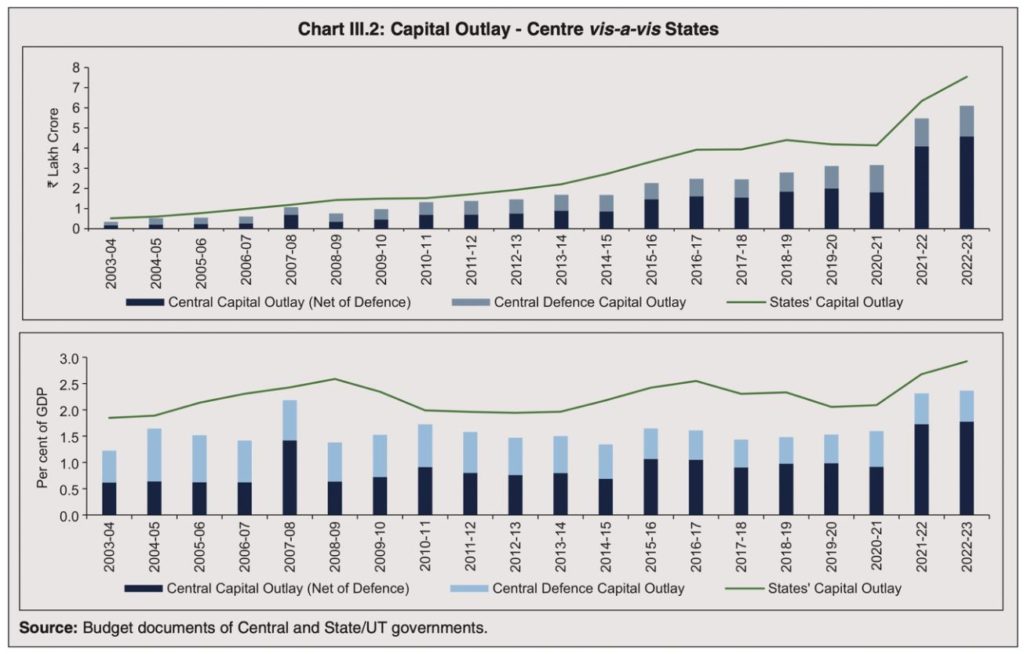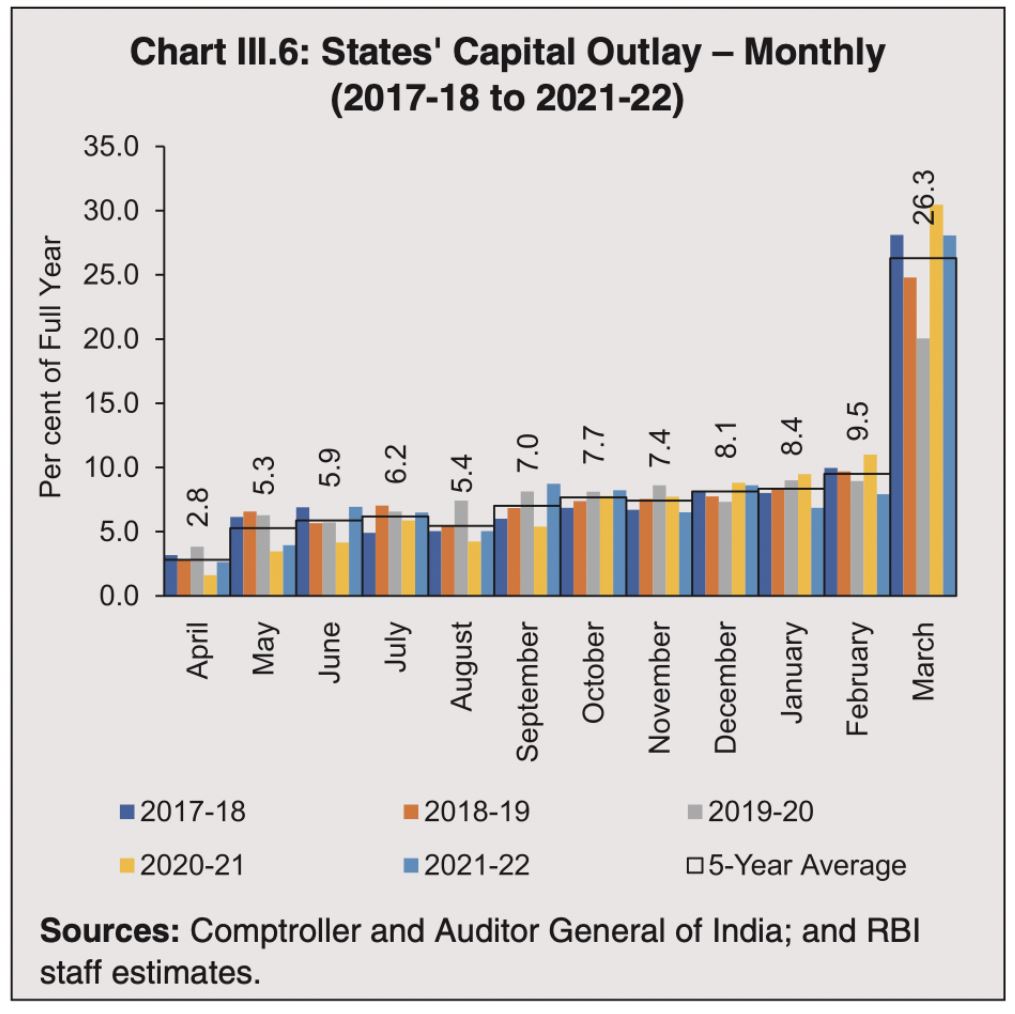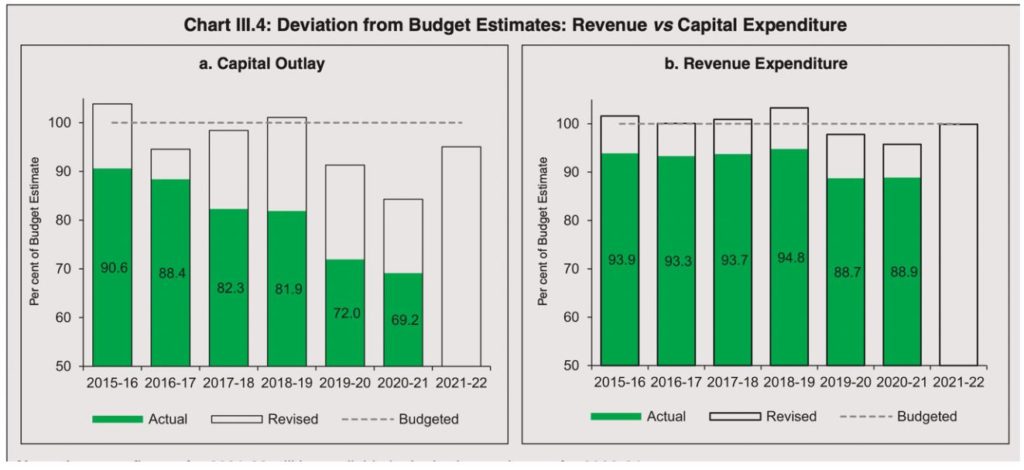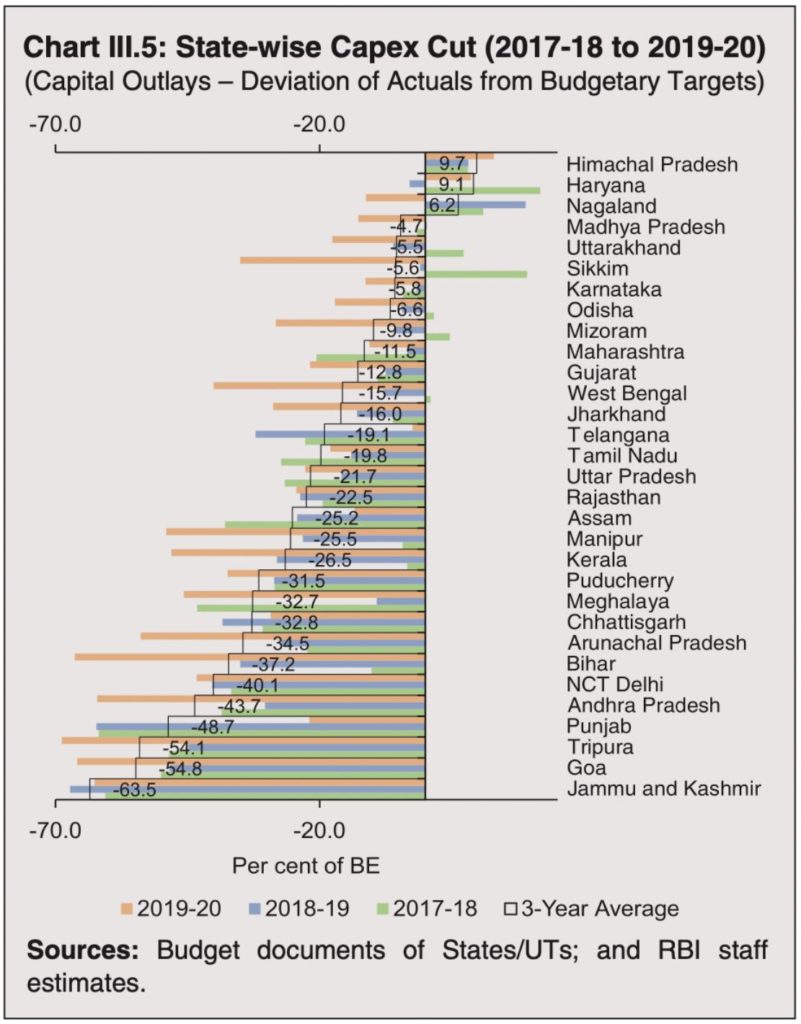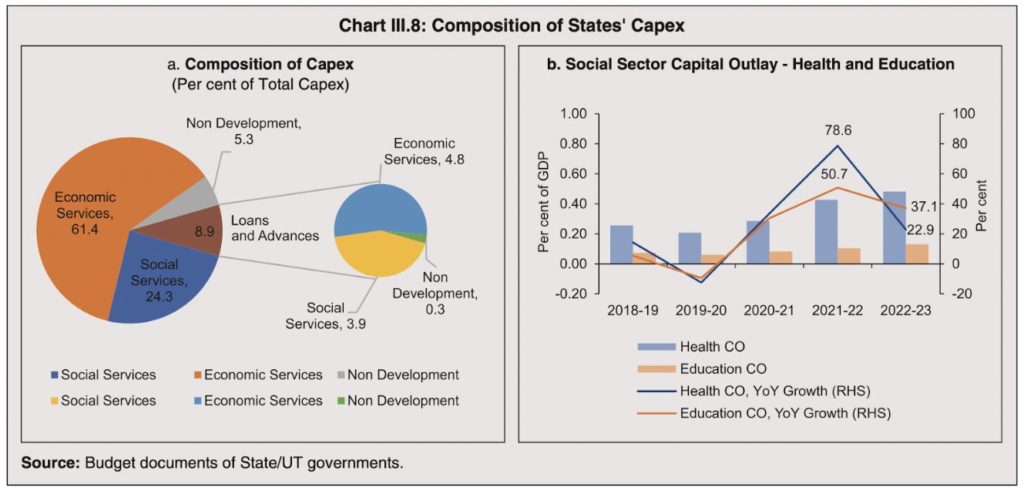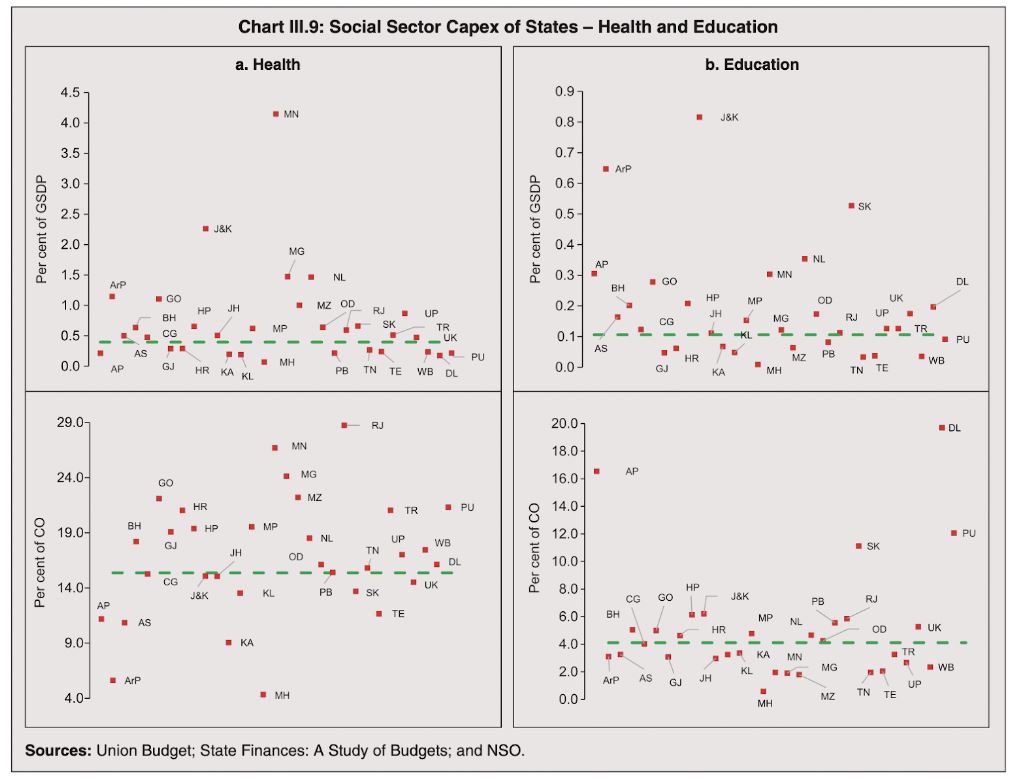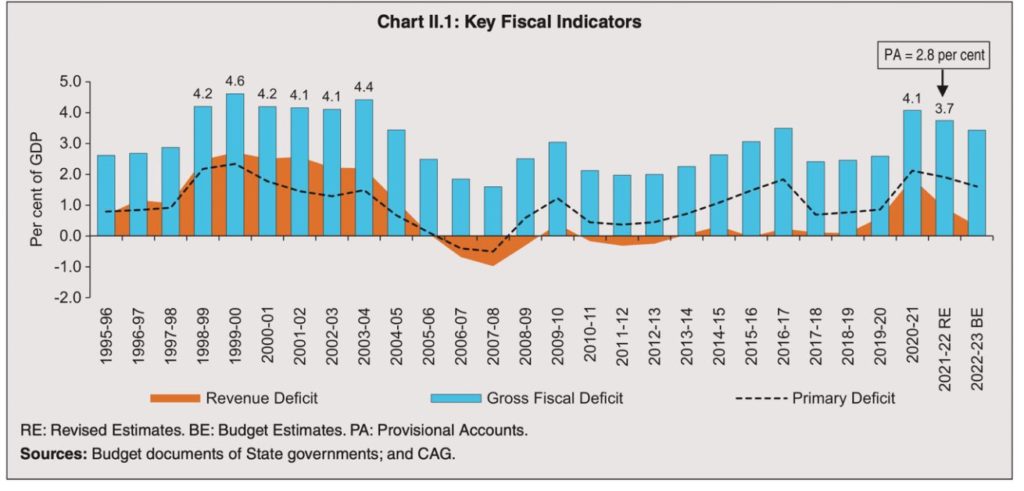The RBI recently released the annual ‘State Finances – A Study of Budgets’ report for 2022-23. The focus of this report is ‘Capital Formation in India – The Role of States’. The report highlights that the States have been spending a greater share of their GSDP on capital expenditure compared to the Centre.
The Reserve Bank of India’s (RBI) annual ‘State Finances – A Study of Budgets’ provides data and analysis of the fiscal position of the State governments of India. The theme for the latest report for 2022-23 is ‘Capital Formation in India – The Role of States’. The theme is in line with the emphasis of the Union government towards Capital Expenditure as evident from the recently presented Union Budget 2023-24.
In this budget, the Government of India envisaged a Capital Expenditure outlay of Rs. 10 lakh crores as per Budget Estimates (BE). This is around 3.3% of the GDP and 37.4% more than the Revised Estimates (RE) for 2022-23 which is Rs. 7.28 Lakh crores. Furthermore, as per the budget documents, there would be a further Rs.3.7 lakh crores of Direct Capital investment by the Centre through the provisions made for the creation of Capital assets through Grants-in-Aid to States, taking the estimates for total Effective Capital Expenditure to be Rs.13.7 lakh crores i.e., 4.5% of GDP.
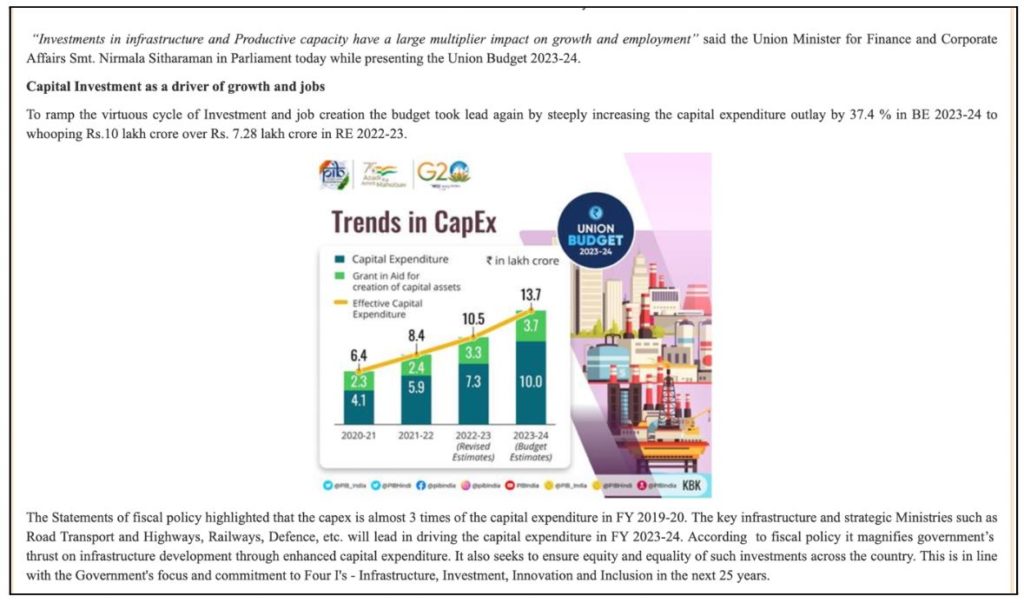
While the Centre announced an increase for 2023-23 on Capital Expenditure, it ought to be noted that the RE for 2022-23 is less than the BE for the year. While presenting the Budget for 2022-23, the BE for Capital Expenditure was Rs. 7.5 lakh crores, while the RE 2022-23 was reduced to Rs. 7.28 lakh crores.
Furthermore, the Union Government has also announced the continuation of its 50-year interest-free loans to state governments for an additional 12 months to aid infrastructure investment with an outlay of Rs.1.3 lakh crores. In this context, this latest report from RBI on State Finances provides insights into not only the fiscal position of the states but also the trend relating to capital formation in the states.
What is Capital Formation & Expenditure?
Capital formation is referred to the process by which the resources are invested in assets, equipment, machinery, transportation assets and other physical assets. This also includes investments made in improving Human capital & technology including skill development, research etc.
The expenditure incurred towards these investments is referred to as Capital Expenditure (CapEx). Such expenditure helps to increase the productive capacity of the economy, ensure fuller absorption of human & natural resources, promote efficiency & innovation etc. among others. The Union government in its budget document envisages a large multiplier impact on growth and employment and the creation of a virtuous cycle through the increase in Capital Expenditure in the form of investments into infrastructure and job creation.
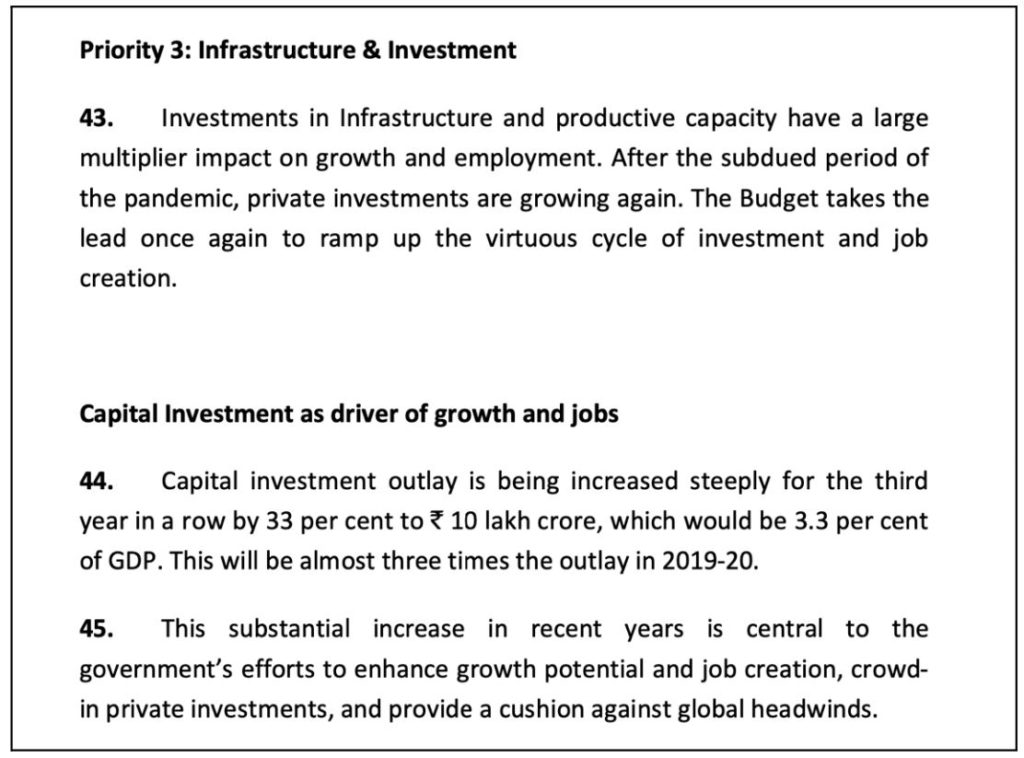
States have a higher Capex to GDP ratio compared to Centre
Data indicates that the Capital Expenditure as a share of GDP is higher for the States (all States) compared to the Centre’s Capital Outlay (CO). In 2022-23, the average Capital Outplay of States is 2.7% of GDP compared to 2.4% of the Centre. In recent years, there has been a higher proportionate increase in the Centre’s CO as a share of GDP but is still lower than that of States’.
If the Central Defence CO is excluded, the gap widens further.
The individual state’s share of CO out of the total share of CO is provided in the report. Uttar Pradesh has the highest share, followed by Maharashtra, Madhya Pradesh, Karnataka, and Tamil Nadu. Also provided in the report is the ratio of each state’s share of CO and the respective states’ share of GSDP.
Trends over the five-year period 2017-18 to 2021-22 indicate skewed spending in the monthly timeline. A major portion i.e., more than a quarter of the total outlay in the year is during the last month of the financial year i.e., in March. This trend is consistent across the five-year period. The trend across the year indicates a month-on-month increase in the capital outlay.
Decreasing trend in proportion of Actual CapEx of States compared to Budget Estimates
While the data indicates that the States do have a longer trend of higher allocation towards capital outlay compared to the Centre, the actual expenditure is less than the initial budget estimates. Trends indicate there the proportion of Actuals compared to the estimates (both Budget & Revised) is decreasing.
During 2015-16, the Actual Capital outlay was 90.6% of the BE. However, in the following years, there has been a steady decline. In 2019-20, the Actuals were only about 72% of the BE. In the pandemic year of 2020-21, it fell further to 69.2%. The actuals for 2021-22 would be provided by the states in the budget for 2023-24, to be presented in the following days to weeks. The budget for 2023-24 would tell us if this trend has reversed following the pandemic year.
Comparatively, the proportion of Actual Revenue spending compared to the BE is higher, although there is a declining trend even in this case.
Large variation exists between the states with respect to Actual vs Budgetary capital outlay. Among the large States, Punjab and Andhra Pradesh have cut down their actual Capex compared to the BE by about 40%. Bihar & Chhattisgarh are the other states which have on average reduced their actual capital outlay compared to their estimates. Meanwhile, Haryana, Madhya Pradesh and Karnataka have managed to spend better on capital outlays in proportion to their initial estimates.
Increase in CapEx towards Health post-pandemic
The COVID-19 pandemic highlighted the importance of investing in Health Infrastructure. The alignment of states’ spending towards this can be seen with an increased Capital outlay for Health. Out of the total CapEx of the states, Economic services constitute the major portion with about 61%. Expenditure on Social Services, of which Health constitute a part, is about a quarter of the total capital spending.
There is an increased allocation towards Health as a proportion of GDP in recent years. There is a 79% y-o-y increase in CO to GSDP ratio in 2021-22 compared to the earlier year.
Although not at the same proportion, there is also an increase in the capital outlay towards another important Social Service i.e., Education.
While the overall capital outlay of States shows an encouraging trend, there exists a large variation among the states. Among the large states, Haryana, Punjab, and Madhya Pradesh have a higher CO to GSDP ratio towards health. These states also have a higher share of outlay on Health out of the total capital outlay, compared to other major states.
With an improved Fiscal position, need for the states to improve their CapEx
The Study of State Budgets report indicates an improved fiscal position of the States after the pandemic-induced stress. It reports increased revenues and more prudent expenditure by the states. The Gross Fiscal Deficit (GFD) was 4.1% of GSDP in 2020-21. The RE indicates a fall in GFD to 3.7% in 2021-22, with a further estimated fall in 2022-23. As indicated earlier, the actuals for 2021-22 of the States would be known once the budgets for 2023-24 are presented by all the states.
The report highlights that with the States’ capital expenditure having a higher share of the total country’s capital expenditure (Centre + States), there is more emphasis on the States having a larger contribution to the Capital formation. Education, health, Infrastructure and Green Energy are a few of the sectors in which increased allocation of capital expenditure can be made to help expand productive capacities as well as create a broader development agenda for the States.
Featured Image: RBI’s State Finances – A Study of Budgets 2022-23


